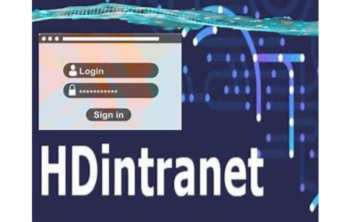Cybersecurity is now more important than ever in today’s hyperconnected world, where digital change powers corporate operations. Potential hazards abound in the digital world, ranging from ransomware attacks and data breaches to insider threats and phishing scams. These hazards have the potential to have disastrous outcomes, such as monetary loss, harm to one’s reputation, and interruption of operations.
Effective risk management requires cyber security solutions, which give companies the instruments, procedures, and frameworks they need to protect their resources and keep operations running. In this guide, we will discuss the role of cybersecurity solutions in risk management.
Recognizing Risk in the Digital Environment
In cybersecurity, risk management entails locating, evaluating, and reducing threats to the availability, confidentiality, or integrity of digital assets. Since cybercriminals use advanced tools to take advantage of weaknesses, cyber threats continue to evolve. Proactive actions are necessary to foresee and prevent such breaches in this constantly changing environment. Important risks consist of:
- Data breaches: Identity theft, financial fraud, and intellectual property loss can result from unauthorized access to private data.
- Ransomware Attacks: These attacks cause organizations to fail by encrypting data and demanding cash to unlock it.
- Phishing: When people get misleading messages, they are tricked into disclosing private information.
- Insider Threats: Workers or contractors who have access to vital systems run the risk of doing harm on purpose or by mistake.
- Supply Chain Vulnerabilities: Businesses may be indirectly threatened by weaknesses in vendor networks.
Cybersecurity Solutions: The Foundation of Risk Management
By using preventive, investigative, and remedial procedures, effective cyber security solutions are made to shield companies from these threats. The main elements of security solutions and how they support risk management are listed below:
- Identification and Reaction to Threats
To find anomalies, sophisticated tools such as Security Information and Event Management (SIEM) systems collect and examine data from many sources. Solutions called Endpoint Detection and Response (EDR) keep an eye on devices for questionable activity and offer quick fixes to stop attacks.
- Intrusion Detection Systems (IDS) and firewalls
As the initial layer of security, firewalls filter communications and stop dangerous entities. IDS programs keep an eye on network traffic for indications of questionable behavior and send out notifications when such dangers are found.
- Access Control and Data Encryption
Sensitive information is protected with encryption, which turns it into unintelligible formats that can only be accessed with a decryption key. Businesses may make sure that only authorized individuals have access to vital data by choosing to combine this with strong access control procedures.
- Management of Identity and Access (IAM)
Role-based access controls and stringent user authentication are enforced by IAM systems. By requesting several kinds of verification, multi-factor authentication (MFA) provides an extra degree of protection.
- Training in Security Awareness
One of the main causes of cyber incidents is human mistake. Frequent training sessions give staff members the skills they need to spot phishing attempts, create secure passwords, and adhere to best practices.
- Frequent Penetration Tests and Security Audits
Regular assessments of the security architecture aid in locating weaknesses and fixing them before an exploit may take advantage of them. Penetration testing examines a system’s resistance by simulating attacks.
- Solutions for Cloud Security
Strong cloud security solutions safeguard workloads, data, and apps kept in cloud environments as operations move more and more into the cloud. These consist of ongoing monitoring, access limits, and encryption.
Cybersecurity’s Business Benefits for Risk Management
Businesses can gain other advantages from investing in cybersecurity solutions in addition to risk mitigation:
- Increased Customer Trust: Customers and stakeholders are more confident when a commitment to safeguarding their information is shown.
- Operational Resilience: In the case of an attack, minimum disruption is guaranteed by strong security measures.
- Savings: Preventive security lessens the financial toll that breaches take, including the expense of legal fees, penalties, and reputational damage.
- Regulatory Compliance: Complying with regulations shields companies from fines and increases their reputation in the marketplace.
- Competitive advantage: Businesses that prioritize dependability and trust in their cybersecurity procedures tend to stand out in these sectors.
Incorporating Cybersecurity in Frameworks for Risk Management
Cyber security solutions need to be integrated within a thorough risk management framework in order to be effective. This is a methodical approach to cyber risk identification, assessment, and mitigation. Organizations can achieve this combination in the following ways:
- Risk Assessment: Assessing risk begins with determining important resources, possible dangers, and weak points. Prioritize mitigation actions by quantifying hazards according to their impact and likelihood.
- Techniques for Risk Mitigation: Make use of technological advances in cybersecurity designed to mitigate hazards that have been found. For instance, use more sophisticated monitoring tools for vital systems or tighten access constraints for high-risk regions.
- Planning for Incident Response: Develop and revise incident response strategies frequently to efficiently and quickly handle potential breaches. Roles, communication procedures, and recovery procedures must all be defined.
- Regulation Compliance: Comply with industry-specific laws and guidelines, such as GDPR or HIPAA, as applicable. Features for compliance management that make these following requirements easier are frequently included in cybersecurity systems.
- Constant Monitoring and Enhancement: Your security posture should change along with cyberthreats. Stay ahead of attackers by using threat intelligence, reviewing policy, and updating systems on a regular basis.
Winding Up
Solutions for cybersecurity are essential in today’s risk management environment. These solutions enable businesses to prosper in a world that is becoming more digital by safeguarding vital assets, reducing risks, and maintaining continuity of operations.
Effective cybersecurity has significantly more advantages than disadvantages, despite ongoing difficulties. In addition to protecting companies, a proactive and comprehensive approach to cybersecurity promotes creativity, trust, and expansion.





